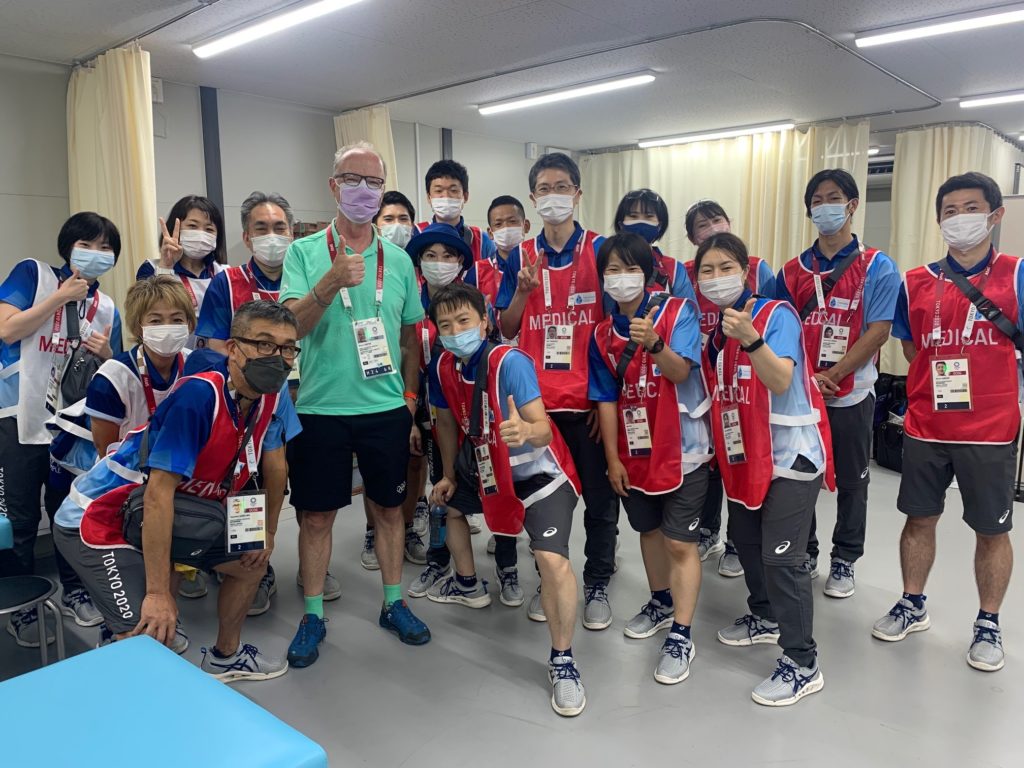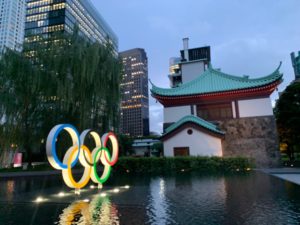There were many unforgettable highlights that occurred during the Tokyo 2020 Olympic Games. Earning a record 24 medals, our Canadian athletes certainly left their mark on the world stage. One of the most memorable outcomes was 21-year-old swimmer Penny Oleksiak taking home three medals on top of the four medals she won at the 2016 Rio Games, becoming the most decorated Canadian Olympian of all time. Andre De Grasse’s performance wowed us, earning three medals including Gold for the 200-meter sprint and Bronze in both the men’s 100-meter sprint and 4×100-meter relay. The epic sudden death penalty kicks for women’s soccer had the country on the edge of their seats for Canada to win the Gold. We could not be prouder of our champions. Our Canadian superstars however are not the only ones who deserve kudos. We must also acknowledge the hard work of the tens of thousands of volunteers behind the scenes that helped Olympians perform at their best.
Medical imaging had an integral role to play in the success of this event. While we were cheering on the athletes from our living rooms, our very own Dr. Bruce Forster was our eyes and ears on the ground, providing oversight for medical imaging at the 2020 Tokyo Games as a member of the International Olympic Commission Medical and Scientific Games Group (GG). There was a total of 11,000 athletes who participated in the Games in 33 sports. Radiology support for the Games consisted of an onsite radiology polyclinic with two 1.5T MRI machines, one X-ray unit, and five ultrasound machines. CT scans, which are uncommonly needed in summer Olympics, were performed at local hospitals. There were also an additional four portable ultrasound machines at six venues, including 3×3 basketball, indoor basketball, volleyball, handball, rugby, and BMX. Venue ultrasound, which was piloted at Vancouver 2010 Winter Games, was used for the first time during the Summer Olympics in Tokyo and Dr. Kentaro Onishi from the University of Pittsburgh will be part of the team tasked to determine its role in field of play athlete care and decision-making.
There was a total of 23 volunteer radiologists and 75 medical radiation technologists (MRTs) at the Games. The medical imaging clinic was open daily from 7 am-11 pm and approximately 900 exams and 550 MRIs were performed throughout the course of the event, with MRI being the most popular modality, bringing home the imaging gold medal! This resulted in approximately 10% of all athletes requiring imaging exams during the Olympics. The radiology polyclinic was the third busiest unit after physiotherapy and dentistry. Medical imaging received high marks from the National Olympic Committee (NOC) physicians for provision of consultation during the Games.

Dr. Forster’s role during this event involved attending daily GG meetings, visiting the polyclinic to provide oversight of the imaging program, assisting NOC physicians with medical issues, visiting venues to ensure that medical equipment was operating at full capacity and that necessary safety protocols were in place, including heat mitigation strategies. The Olympic Games were fortunate enough to have some of the best athletic heat scientists in the world working with the athletes.
Dr. Forster had regular contact with athletes and as a result was tested daily with polymerase chain reaction (PCR) COVID tests and had to provide a daily report via an app of any symptoms. Every athlete and volunteer had their temperature taken digitally on average 5-10 times per day and there was a universal app that was used to detect any positive close contacts. A total of 680,000 PCR tests were conducted with all stakeholders during the Games, yielding a very low positivity rate. Traditional heat issues were initially the biggest concern with the summer Games, however, with the onset of COVID this became the primary focus, helping to keep the athletes protected and limiting any potential spread of the disease.
Seven imaging research projects were spearheaded during the Games which included studies of bone stress, muscle strain, and core muscle injury. Dr. Forster had the opportunity to lead research projects on spondylolysis and upper extremity injury in volleyball, handball, tennis, and javelin. There was also an imaging symposium offered as part of the academic program for NOC physicians, an all-Canadian initiative that featured talks from Dr. Forster, Dr. Linda Probyn and Dr. Larry White, each of whom are radiology leaders in sports imaging.

Tokyo 2020 showcased the importance of medical imaging in sports and demonstrated the value that radiology can bring to optimizing performance and reducing advanced injury in professional, elite amateur and recreational athletes alike. Radiology will have an equally strong presence in Beijing 2022 and Paris 2024, which the Medical Games Group is actively planning for, and undoubtedly as well in Cortina-Milan 2026 and LA 2028.
“I thoroughly enjoyed my time at the Tokyo Games and feel privileged to have had the opportunity to help provide world renowned athletes the best care possible through medical imaging. I would like to acknowledge my Japanese radiology colleagues and all the dedicated volunteers, for their contribution to the success of the 2020 Olympic Games. I am hopeful to once again represent radiology in future Olympics.” – Dr. Bruce Forster, Professor and Head at the University of British Columbia, Department of Radiology, and Clinical Lead, Medical Imaging Appropriateness BC Patient Safety & Quality Council
